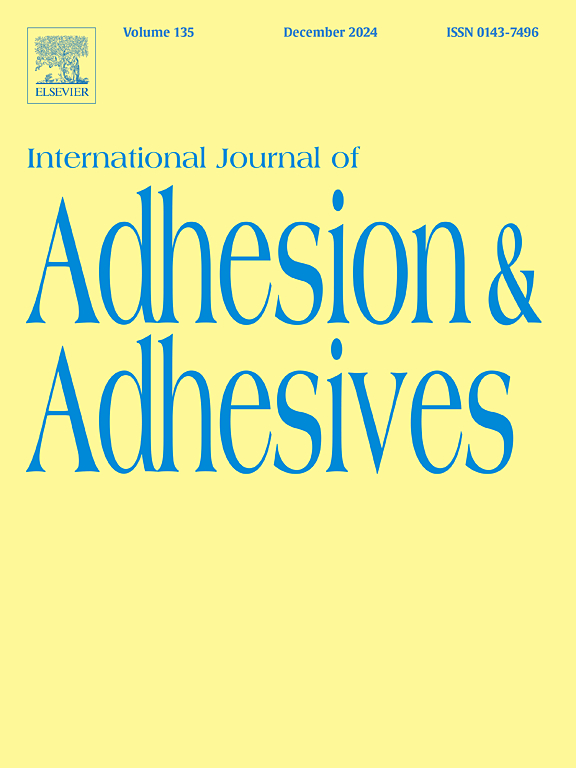使用原位紫外线流变仪的光学透明胶粘剂的流变特性:来自紫外线强度和丙烯酸酯单体的见解
IF 3.5
3区 材料科学
Q2 ENGINEERING, CHEMICAL
International Journal of Adhesion and Adhesives
Pub Date : 2025-05-24
DOI:10.1016/j.ijadhadh.2025.104069
引用次数: 0
摘要
本研究研究了显示工业中常用的光学透明胶粘剂(OCAs)的流变性能,重点研究了紫外线(UV)固化强度和丙烯酸酯单体组成对其的影响。利用原位紫外流变仪,研究了丙烯酸异硼酸酯(IBOA)在影响oca内部交联结构中的作用。温度梯度、蠕变恢复和振荡剪切测试(SAOS和LAOS)的结果表明,IBOA的掺入导致玻璃化转变温度(Tg)升高约30°C,存储模量(G ')增加约1.1倍,这是由于其庞大的分子结构限制了链的迁移率。I-0(不含IBOA)形成了坚固的、化学交联的、具有固体状行为的网络,而I-40(含IBOA)表现出表明线性或支链结构的粘弹性。这些差异可追溯到固化前链形成动力学,其中IBOA的存在及其繁殖速度导致较短链的早期交联。该研究结果为优化uv固化工艺和单体配方提供了宝贵的见解,从而为先进的显示应用量身定制OCA性能。本文章由计算机程序翻译,如有差异,请以英文原文为准。
Rheological characterization of optically clear adhesives using an in situ UV-rheometer: Insights from UV intensities and acrylate monomers
This study investigates the rheological properties of optically clear adhesives (OCAs) commonly used in the display industry, with a focus on the effects of ultraviolet (UV) curing intensity and acrylate monomer composition. Using an in situ UV-rheometer, the research particularly explores the role of isobornyl acrylate (IBOA) in influencing the internal crosslinking structure of OCAs. Results from temperature ramp, creep-recovery, and oscillatory shear tests (SAOS and LAOS) revealed that the incorporation of IBOA leads to higher glass transition temperatures (Tg) of about 30 °C and increased storage modulus (G′) of about 1.1 times, attributed to its bulky molecular structure that limits chain mobility. While I-0 (without IBOA) formed a robust, chemically crosslinked network with solid-like behavior, I-40 (with IBOA) exhibited viscoelastic properties indicative of linear or branched chain structures. These differences were traced to pre-curing chain formation dynamics, where the presence of IBOA and its propagation rate resulted in early crosslinking with shorter chains. The findings provide valuable insights into optimizing UV-curing processes and monomer formulations to tailor OCA performance for advanced display applications.
求助全文
通过发布文献求助,成功后即可免费获取论文全文。
去求助
来源期刊

International Journal of Adhesion and Adhesives
工程技术-材料科学:综合
CiteScore
6.90
自引率
8.80%
发文量
200
审稿时长
8.3 months
期刊介绍:
The International Journal of Adhesion and Adhesives draws together the many aspects of the science and technology of adhesive materials, from fundamental research and development work to industrial applications. Subject areas covered include: interfacial interactions, surface chemistry, methods of testing, accumulation of test data on physical and mechanical properties, environmental effects, new adhesive materials, sealants, design of bonded joints, and manufacturing technology.
 求助内容:
求助内容: 应助结果提醒方式:
应助结果提醒方式:


